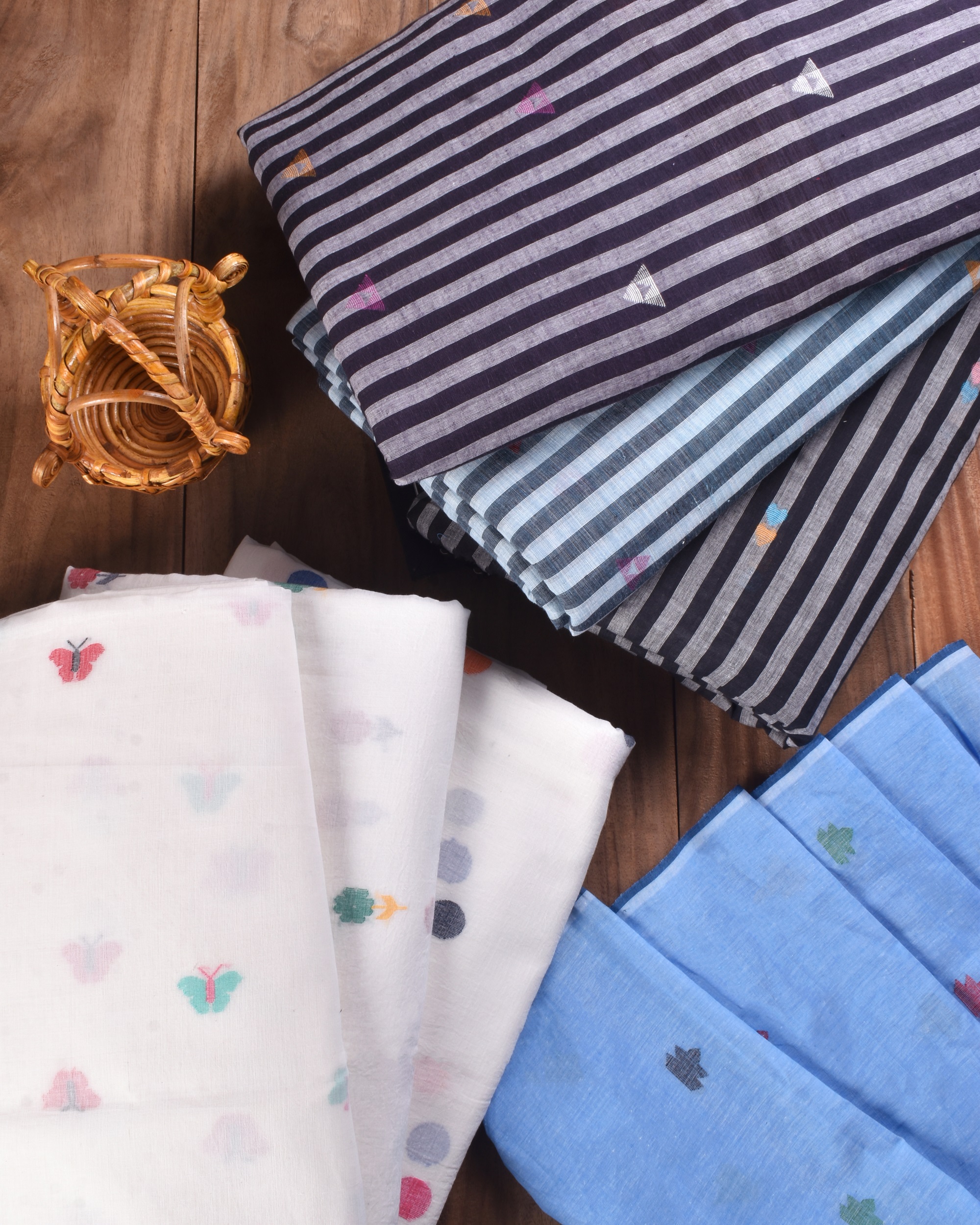
Jamdani: Tracing the Evolution of a Timeless Craft

With its rich and varied textile traditions, Jamdani weaves have been practiced by weavers of Bengal for centuries, showcasing an instinctive sense of color, weave, and harmony. These crafts, initially intended for traditional Indian attire and ethnic clothing, have evolved over time. In recent years, contemporary Indian and foreign designers have embraced Jamdani weaves to create modern silhouettes. Now, these vintage Jamdani weaves, infused with modern designs, grace runways and fashionable boutiques alike.
Anuprerna celebrates the craftsmanship of Bengal's weavers and promotes the continued appreciation of Jamdani tradition. Through collaborations with designers and artisans, Anuprerna ensures that Jamdani weaves remain relevant in contemporary fashion, bridging the gap between tradition and modernity. As Anuprerna's customers adorn themselves with these exquisite creations, they become part of a legacy that honors centuries of textile artistry and cultural heritage.
Introduction
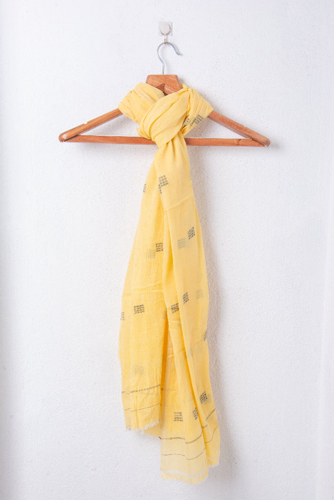
Jamdani refers to weaving intricate floral, geometric and abstract designs on very fine cotton muslin, linen or silk base. Made by extra weft technique, jamdani motifs are one of the most time and labour - intensive forms of handloom weaving. These motifs appear to be floating against the sheer muslin backdrop.
Jamdani Insight
Modernising of the weave has combined inventing designs, motifs, colours and textures. The Jamdani motif design themselves have evolved from traditional designs to more contemporary ones. In the history of Jamdani it was limited to traditional ethnic wear like sarees and dupattas but are now being redefined by adopting modern motif design on western silhouettes which were otherwise never associated with this craft.
Owing to its soft and fine quality, as well as its sustainable production, many designers, from India and foreign, have welcomed this craft into their design aesthetics.
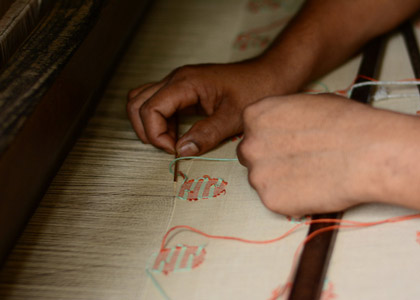
Connection of Jamdani with Fashion
Fashion designer Rahul Mishra incorporated Jamdani weave into western silhouettes in his Spring-Summer 2014. We see the indigenous jamdani motif design styled in new forms like a floor-length gown, handkerchief skirt, jackets and peplum top. The use of Jamdani for the midi length fitted dress is another beautiful fusion of the east and west.
Haryana based designer Rina Singh, on the other hand, experimented with both the composition and form of the garment. Her label, Eka's AW17 collection showcases a unique amalgamation of silk and wool for trenches, slip dresses and culottes. These widely popular western styles and softness of this muslin are perfect a match for workwear as well as casual attires.
Rahul Mishra incorporated Jamdani weave into western silhouettes in his Spring-Summer 2014
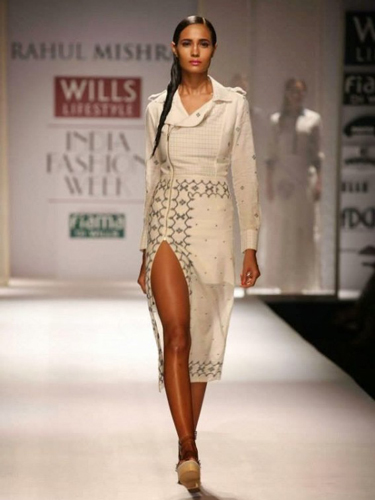
Jamdani and its significance in Fashion
Aneeth Arora’s cotton woven Jamdani dress for Péro was a part of an exhibit on Indian fabrics at Victoria and Albert Museum, London in 2015-2016. This knee-length pinafore dress is constructed in a fit and flare style with bold motifs interlaced as supplementary weft its hem and small ones scattered all over its skirt.
Abraham & Thakore, too, have used jamdani with their minimalistic tailoring to create workwear staples like jackets and square scarves.
Designer brands outside India as well have incorporated Jamdani in their sustainable line of designs. There is a vast range of styles including a variety of dresses, jumpsuits, jackets, trousers, shrug showcasing the beauty of this craft.
Aneeth Arora’s cotton woven Jamdani dress for Péro
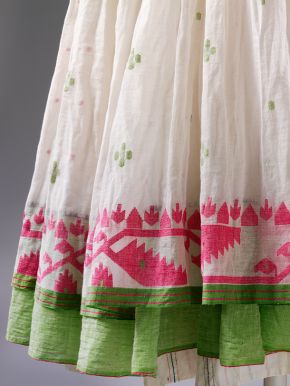
Jamdani Art Gallery
The beauty of Jamdani fabric lies in its motifs which appear to be floating on the body of muslin. Transparency of the fabric’s body, the density of the threads making up the motifs, and their proportional placement are all contributing factors. These motifs ranged from flora to fauna like tiger's paws, paisley, grapevines etc. Over time, these ancient motifs have become simplified. Today we can see minimalistic modern motif design in abstract geometric shapes along with varying size and colour, giving the fabric a modern appeal.
From a 6 yard draped ethnic Jamdani cloth, it today has evolved to a point where it is being celebrated across the globe in newer forms.
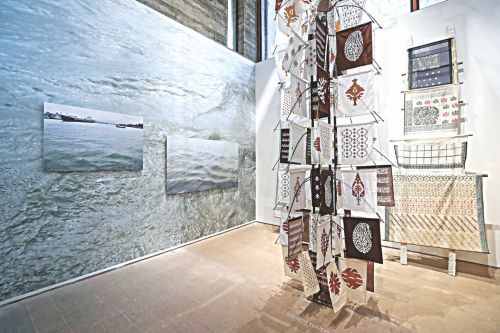
Anuprerns's Handwoven Jamdani Fabrics
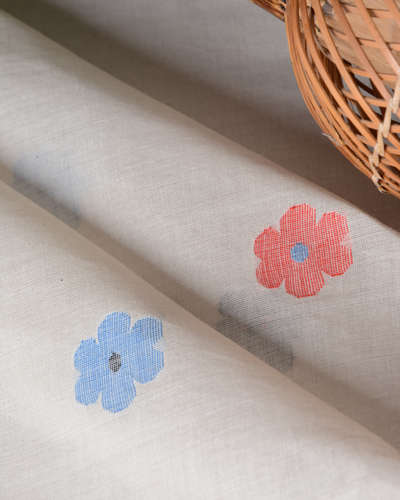
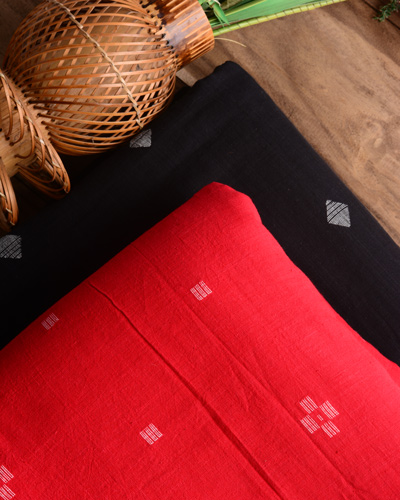
related questions
What is the difference between Jamdani and Jacquard
arrow_drop_downJamdani is a handwoven technique where artisans create intricate patterns individually. In contrast, Jacquard involves mechanized looms with automated pattern creation, allowing for complex designs.
What is Jamdani weave?
arrow_drop_downJamdani is a traditional handwoven textile art originating from Bengal, involving intricate patterns created by adding supplementary weft threads to cotton or silk fabrics, producing lightweight and elaborately designed textiles.
Which state is famous for Jamdani weaving?
arrow_drop_downJamdani weaving is particularly famous in the state of West Bengal, India. The town of Dhaka, which is now part of Bangladesh, is historically renowned for its Jamdani production. Today, both West Bengal and Bangladesh continue to be significant centers for preserving and practicing the art of Jamdani weaving.
Why is Jamdani so expensive?
arrow_drop_downJamdani is expensive due to its intricate handwoven patterns, meticulous craftsmanship, high-quality materials like fine cotton or silk, and the labor-intensive process, making it a premium and exclusive textile.
More Blogs
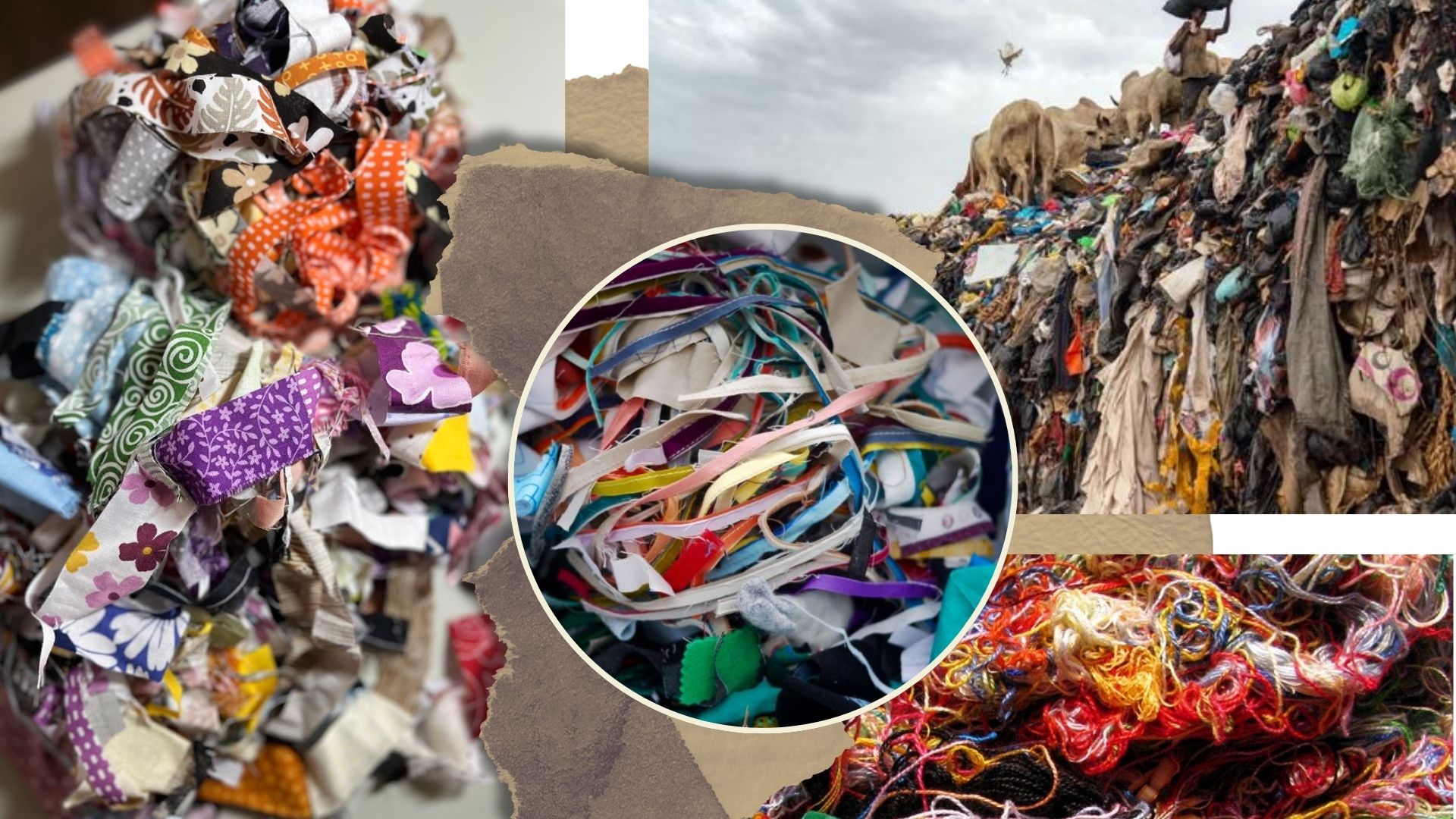
the scrap fabric solution, from clutter to creation
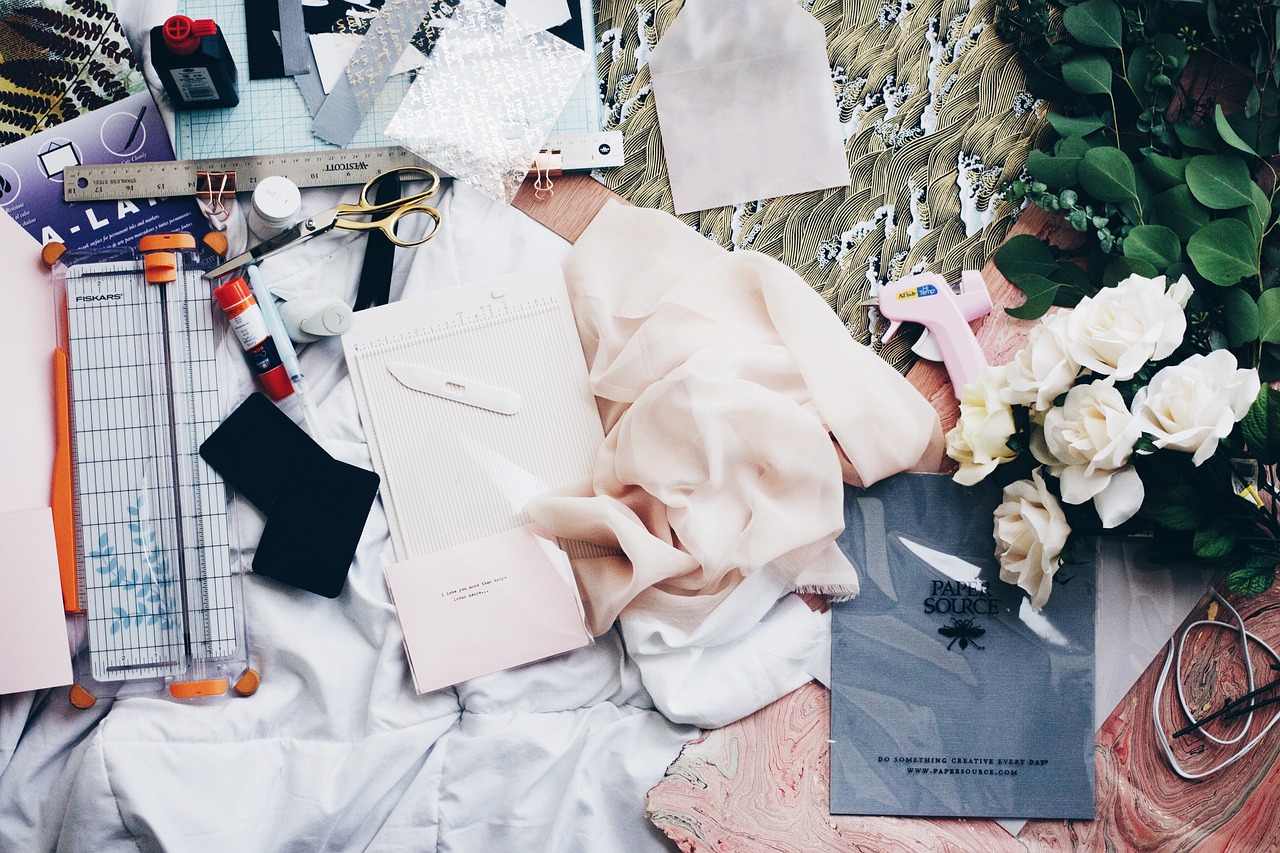
the art of sustainable recyclability
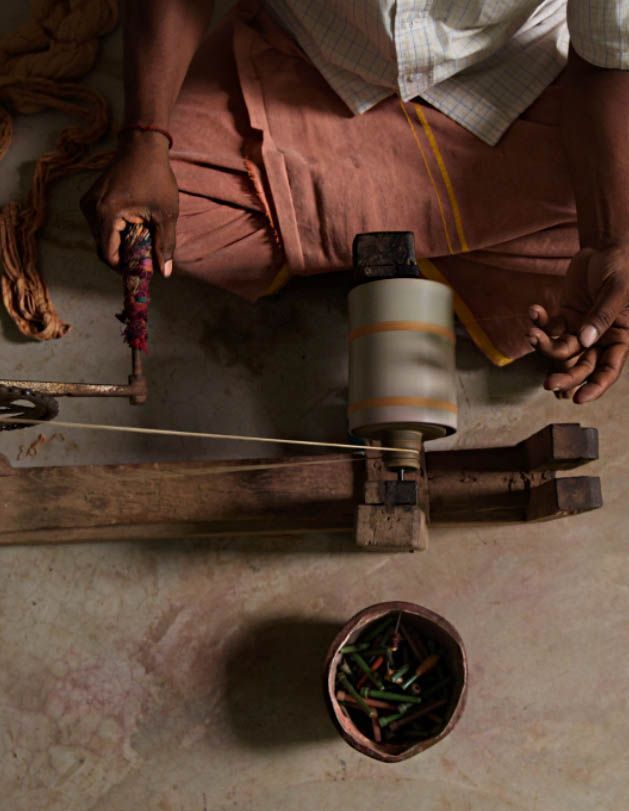
indian handloom in contemporary world
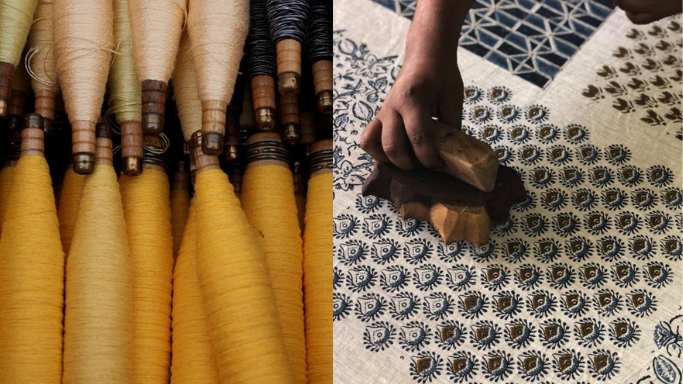
sustainability through handloom manufacturing
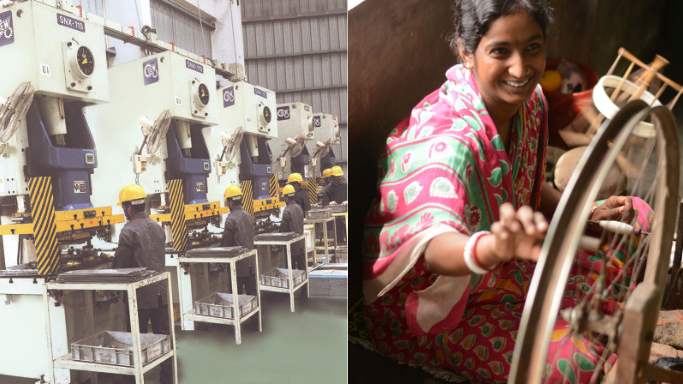
how to identify handloom fabrics in a powerloom world
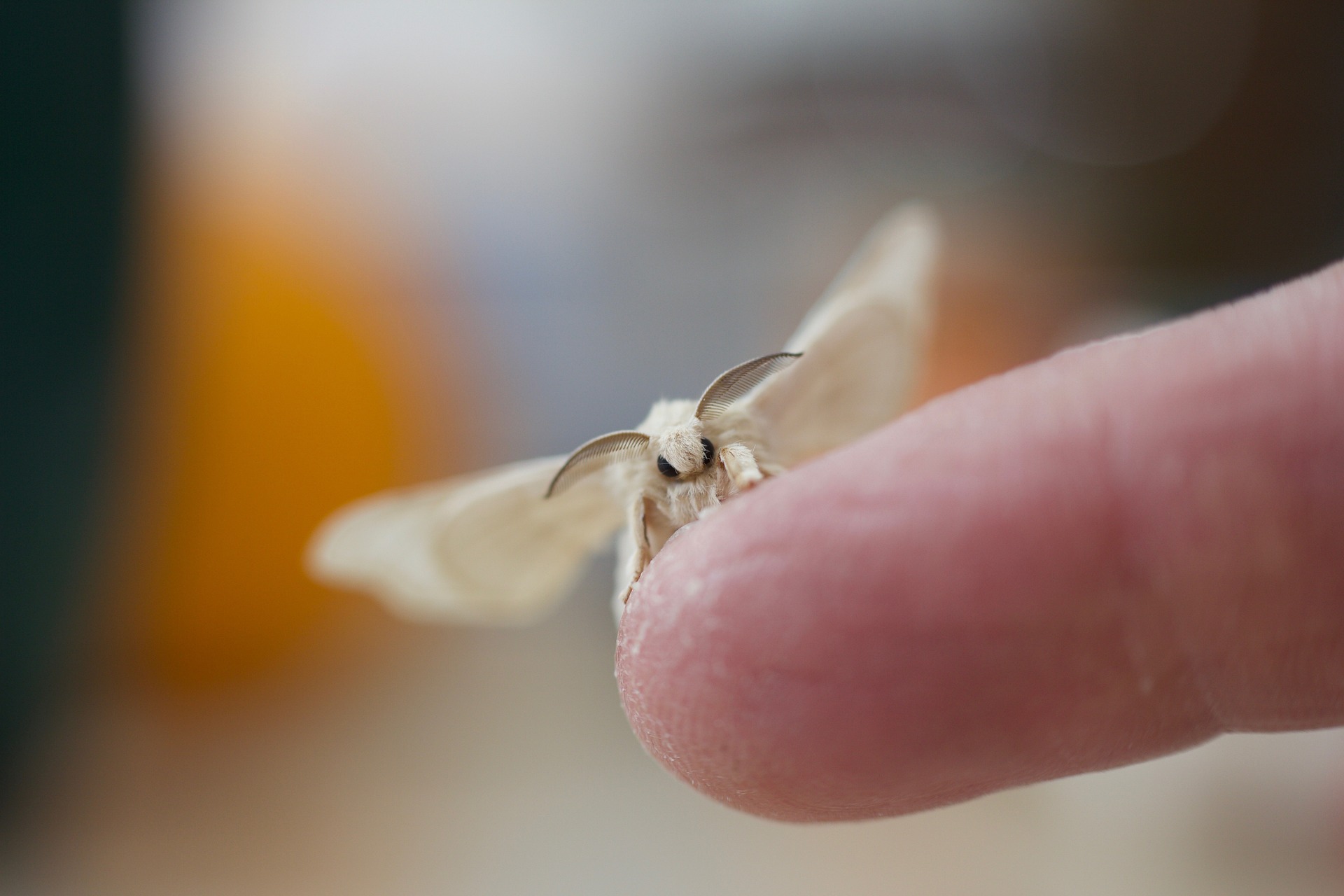
ketia silk - a peace lover






